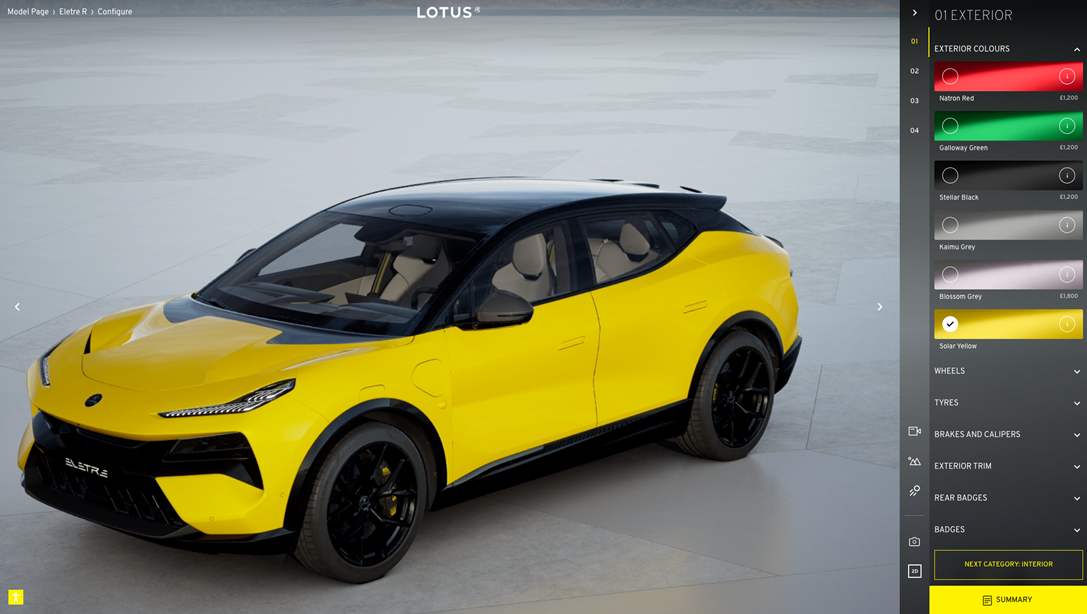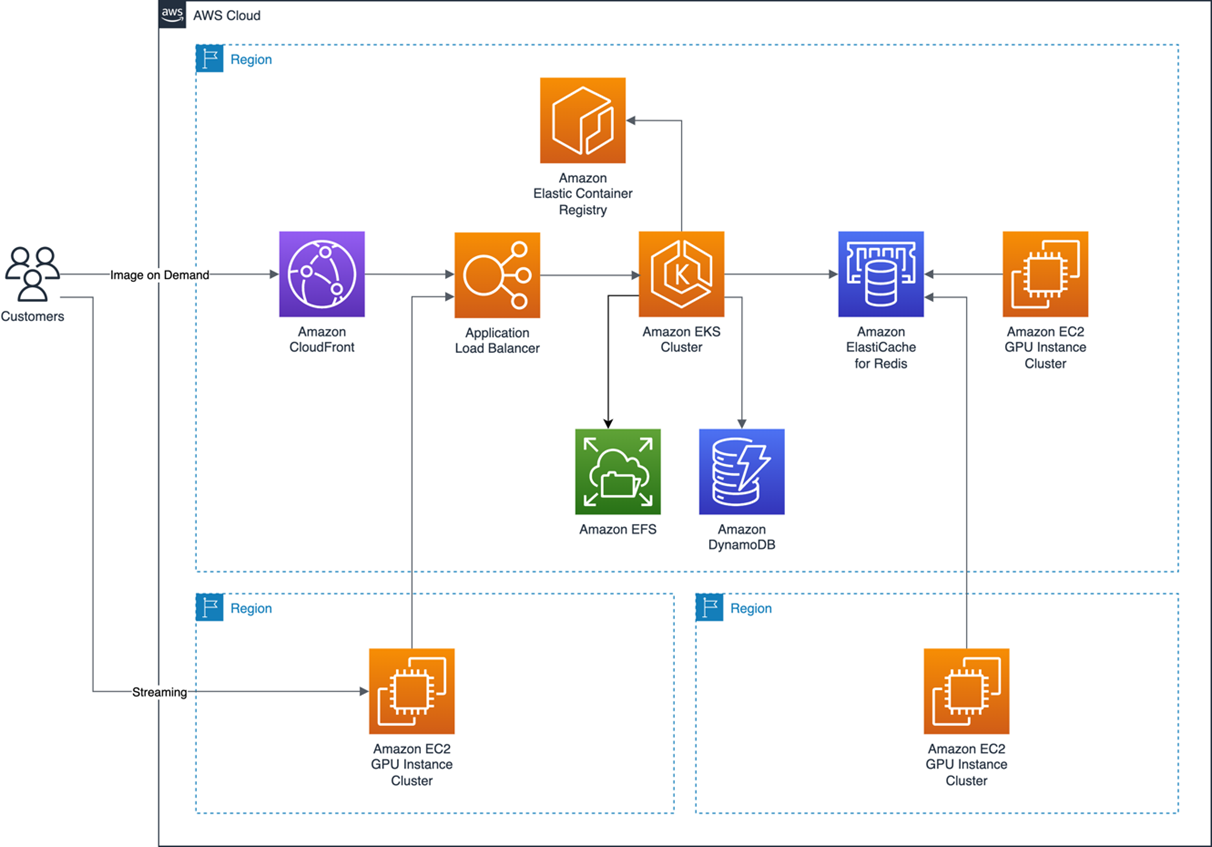AWS Partner Network (APN) Blog
Creating Immersive Virtual Showroom Experiences for Luxury Cars with MHP’s Elastic Content Platform
By Christian Kloetzel, Associated Partner – MHP
By Pascal Bayer, Manager – MHP
By Shankar Subramaniam, Sr. Partner Solutions Architect – AWS
By Robert Meyer, Partner Solutions Architect – AWS
 |
| MHP |
 |
Digitalization and digitization continue to bring customers and enterprises closer together. The automotive industry, and especially luxury car manufacturers, are no exception. Their products usually represent capital-intensive investments for customers who like to personalize their desired vehicle and make it truly their own.
Car manufacturers acknowledge the need for a more immediate, virtual customer journey and have responded with online car configurators that allow for a customization experience offering first—albeit static and generic—visualizations, of the final product.
As the automotive sector is increasingly disrupted by emerging players, the competition for customers’ attention has accelerated and new digital channels offer more options to stay in touch with prospective buyers. This is particularly true for luxury car customers, as they are often more demanding and expect a sophisticated purchase experience.
To close the gap for customers between customizing a respective luxury car model and really seeing it in action, MHP created a platform solution on Amazon Web Services (AWS) called the MHP Elastic Content Platform (MHP ECP). It’s a modular solution able to emulate a virtually delivered automotive showroom experience for prospective buyers.
In this post, we will describe the challenges that come with creating a virtual immersive showroom experience, and how MHP ECP achieves this feat by relying on the AWS Cloud as technology platform of choice.
MHP is an AWS Advanced Tier Services Partner founded in 1996 as a subsidiary of Porsche AG. MHP’s approach comprises management and IT consulting for the automotive sector and beyond, as well as providing in-depth process know-how that enables customers to shape a better future for their business.
Bringing the Automotive Showroom to Customers
Building a flexible customer experience platform for luxury cars that fits in with an automotive manufacturer’s existing IT landscape and resources comes with a set of requirements.
To accommodate fluctuating customer demand and future products, a scalable solution for provisioning graphical compute power—as well as storage facilities for holding car-related assets like images, data sheets, configuration taxonomies—is needed.
Additionally, the solution needs to be performant and globally accessible. The customer experience must be able to create the same “wow” effect that a real showroom visit would induce without technology getting in the way.
This means the solution should minimize media disruption caused by incompatible technologies. The challenge is building a platform with a variety of technologies that all deliver the same quality, ultimately creating a symbiosis of technology and user experience based on dynamic content.
While a real showroom visit engages all senses, the MHP Elastic Content Platform focuses on the visual aspect of the virtual luxury car experience to which photorealistic visualizations are key.
To create these visualizations, CAD data is prepared to visualize a luxury car maker’s model range in detail. Depending on the brand and models, this can result in a lot of equipment variants. One model alone can have several million individualization options. In addition, car model palettes are regularly revised which leads to continuous updating.
Implementing different camera perspectives poses another challenge, as the vehicles should be inspectable in a 360-degree fashion. In this context, it’s important to consider the lighting conditions and make sure every vehicle detail is correctly placed.
To address these requirements, MHP ECP leverages Epic Games’ Unreal Engine. Customers can supply ultra-high-definition 3D models of their products, in this case luxury cars, which are then rendered on demand by Amazon Elastic Compute Cloud (Amazon EC2) sporting NVIDIA tensor core GPUs.
Figure 1 – Exemplary car configurator experience powered by MHP ECP.
These renderings can be delivered to customers via real-time 3D streaming or static 2D image-on-demand The real-time 3D stream allows for a 360-degree view of the vehicle and gives the customer an impression of how the real car would look once ordered and delivered.
2D image-on-demand, meanwhile, makes it possible to automatically render high-resolution static images of a configured vehicle in a pre-defined camera perspectives in just a few milliseconds. It can serve as a fallback, should the customer’s technical setup not be fit for a real-time 3D stream.
Regardless of whether it’s an image of the vehicle’s interior or exterior, the result is always of high quality and according to the customer’s customization. If prospective buyers change the color or the rims of the vehicle, for example, they receive a realistic image of the vehicle in exactly the desired configuration, as shown in Figure 1.
This way, MHP ECP allows customers to configure, navigate, and visualize a selected model in the smallest detail. This creates an immersive experience and can help kickstart a customer journey.
Altering the Automotive Showroom Experience with AWS
To serve customers worldwide, while at the same time facilitating a real-time 3D/2D immersive experience, the MHP Elastic Content Platform relies on the AWS Cloud’s global footprint and point-of-presence network. AWS services allow high-end graphical processing and orchestration of microservices.
Figure 2 – MHP Elastic Content Platform Architecture.
The diagram above gives an overview of MHP ECP’s architecture from a principal design point of view:
- Amazon CloudFront: Caches 2D image-on-demand responses to reduce latency and operating cost.
- Application Load Balancer: Manages API request traffic for the worker nodes running in the Amazon EKS cluster.
- Amazon EKS: Runs the containerized microservices, that make up the MHP ECP’s bookkeeping and brokering under the hood.
- Amazon EFS: Serves as second-level cache for image-on-demand and is used as a shared filesystem for all microservices.
- Amazon EC2 GPU Instances: Amazon EC2 instances with latest NVIDIA tensor core GPUs, running Unreal Engine for rendering 3D streaming and 2D image-on-demand workloads.
- Amazon DynamoDB: Short URL storage for saved configurator sessions.
- Amazon ElastiCache for Redis: Serves as high-throughput render queue for the Amazon EC2 GPU instances.
The Amazon EC2 G5 instances whose NVIDIA tensor core GPUs allow for real-time raytracing currently bear all the rendering workloads for the configurator. Paired with the capabilities of Unreal Engine for 3D and 2D asset modelling, this allows for a high quality of the generated visualizations.
Furthermore, both of the MHP ECP’s streaming variants use Amazon Elastic Kubernetes Service (Amazon EKS) for the orchestration of containerized microservices, which are used for governing product configuration option logic as well as for monitoring and analytics of MHP ECP’s overall operations.
Amazon EKS also leverages auto scaling to absorb peak loads by dynamically expanding the cluster’s resources if required.
With Amazon CloudFront, MHP is able to distribute content worldwide while ensuring low latency. Especially in the area of 2D image-on-demand streaming, this allows for a smooth customer experience.
The user interaction flow for MHP ECP looks like this:
- Customer calls the online configurator website.
- Customer’s browser connects to MHP ECP via API calls to check for an available 3D streaming session, which can lead to two distinct outcomes:
- 3D streaming is available: The customer is connected to a streaming instance.
- 3D streaming is not available: Either there is no free 3D streaming instance or the customer’s connection is not fast enough. Either way, the customer is connected to the 2D image-on-demand fallback solution.
- Customer interacts with the configurator and, for example, changes product configuration options, moves the camera angle, switches environmental setups, or toggles product animation states.
- MHP ECP provides real-time updates in response to the customer’s actions, either as a 3D stream or 2D image-on-demand rendering.
- Customer can save a product configuration/state and revisit it via a unique URL, to resume configuration at a later point.
Conclusion
With the MHP Elastic Content Platform (ECP), the virtual immersive showroom for luxury cars is already a reality and can be experienced today with the car configurators of some of the most prestigious car brands in Europe.
The possible applications do not end there, however. Any product that can be modelled as a 3D asset or composition thereof in Unreal Engine can be served to customers, where the ability to visualize a complex product plays a major role in a purchase decision.
MHP ECP could be leveraged in the property and real estate business, for example. Architects designing new houses or apartments would be able to show customers an immersive, accessible 3D representation of their developments, and these could even be altered on the fly according to customer configuration wishes.
Stay in touch with MHP and follow the latest developments via the MHP Digital Customer Experience website, as well as on the MHP and AWS partnership page.
MHP – AWS Partner Spotlight
MHP is an AWS Advanced Tier Services Partner founded in 1996 as a subsidiary of Porsche AG. MHP’s approach comprises management and IT consulting for the automotive sector and beyond, as well as providing in-depth process know-how that enables customers to shape a better future for their business.


